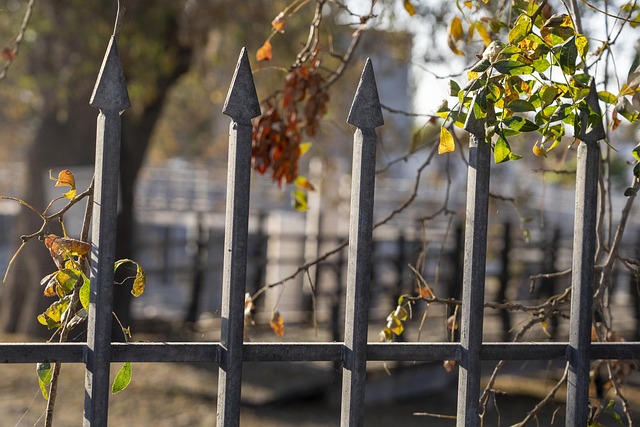Coastal areas face unique environmental challenges, from powerful storms to corrosive saltwater. Traditional fencing often fails in these conditions, leading to frequent replacements and costly repairs. This article explores durable wooden fencing as a robust solution for coastlines. We delve into the environmental considerations, highlighting the advantages of wood, guiding readers through choosing suitable species for saltwater exposure, detailing specialized treatments, providing installation best practices, and offering essential maintenance tips to ensure long-lasting coastal fences.
- Understanding Coastal Environmental Challenges
- Advantages of Wooden Fencing for Coastlines
- Choosing Durable Wood Species for Saltwater Exposure
- Specialized Treatments for Longevity at Sea
- Installation Techniques for Beachfront Safety
- Maintenance Tips to Preserve Your Coastal Fence
Understanding Coastal Environmental Challenges
Coastal areas face unique environmental challenges due to their proximity to water and exposure to harsh weather conditions. One of the primary issues is erosion caused by waves, tides, and strong winds, which can significantly impact structures and landscapes. The salt content in the air is another factor; it can accelerate wood decay and corrosion, making traditional fencing materials less durable. Additionally, these areas often experience extreme temperatures, high humidity, and frequent storms, all of which contribute to the deterioration of materials over time.
To withstand these challenges, durable wooden fencing for coastal regions needs to be carefully considered. It must be constructed with weather-resistant species like cedar or treated wood that can endure moisture and salt. Proper sealing and regular maintenance are essential to prolong the life of the fence. Innovations in wood preservation techniques, such as pressure-treated lumber or advanced coatings, offer even more solutions for creating long-lasting fencing systems in these demanding environments.
Advantages of Wooden Fencing for Coastlines
Wooden fencing offers numerous advantages when it comes to coastal areas, where durability and aesthetic appeal are essential considerations. One of its key strengths is its natural resistance to corrosion and rust, which is a common issue with metal fences in humid environments. This makes wooden fences a sustainable choice, as they require less maintenance over time, saving homeowners and property managers both time and money.
Additionally, wood has a timeless beauty that complements coastal landscapes. The warm tones and natural textures of certain hardwoods, like cedar or redwood, can enhance the overall ambiance of a property, creating a sense of harmony between the built environment and its surroundings. This aesthetic appeal not only increases the curb appeal of homes but also adds value to the property, which is particularly beneficial in coastal markets.
Choosing Durable Wood Species for Saltwater Exposure
When selecting wood for coastal fencing, understanding the impact of saltwater exposure is key. Not all woods are created equal in this regard, and choosing the right species is essential for long-lasting durability. Many softwood varieties, commonly used for general construction, can degrade rapidly when exposed to salty air and moisture.
Hardwoods, on the other hand, offer better resistance due to their higher density and natural oils. Species like teak, cedar, and redwood are renowned for their exceptional coastal resilience. These woods have inherent properties that repel water, resist rot, and stand firm against the corrosive effects of saltwater, making them ideal choices for durable coastal fencing.
Specialized Treatments for Longevity at Sea
To withstand the relentless pounding of waves and salt air, wooden fencing in coastal areas requires specialized treatments. These treatments go beyond standard waterproofing and pest repellents. They involve deep penetration of preservatives into the wood’s core to protect against both physical damage from weather conditions and biological threats like termites and fungi.
Innovative technologies today offer a range of options, from chemical treatments that infuse the wood with long-lasting protection to natural alternatives like plant-based oils and waxes that not only shield but also enhance the wood’s aesthetic appeal. These specialized treatments ensure that fencing in coastal environments doesn’t just last but also retains its beauty for years to come.
Installation Techniques for Beachfront Safety
When installing durable wooden fencing in coastal areas, special consideration must be given to beachfront safety. One effective technique is to use a concrete base that anchors the fence securely into the ground. This prevents the fence from being toppled by strong winds or storm surges. Additionally, incorporating impact-resistant components like galvanized steel brackets and bolts can enhance the fence’s durability and stability.
Another crucial installation method involves elevation. Raising the fence slightly above ground level helps protect it from frequent coastal moisture and salt exposure. This can be achieved through elevated posts or a modular design that allows for drainage. Regular inspections and maintenance, including re-tightening hardware and repainting or sealing wooden sections, are essential to ensure the fence remains robust and safe in these challenging environments.
Maintenance Tips to Preserve Your Coastal Fence
To ensure your durable wooden fence stands strong against the coastal elements, regular maintenance is key. Start by cleaning the fence twice a year with a pressure washer to remove any built-up salt, sand, or algae. This will prevent staining and keep your fence looking fresh.
After cleaning, apply a high-quality water-repellent sealer every six months to protect the wood from moisture. Be sure to use a product specifically designed for exterior use and follow the manufacturer’s instructions for proper application. Regular inspection is also vital; look for any signs of rot, damage, or insect infestation, addressing these issues promptly to prevent further complications.
